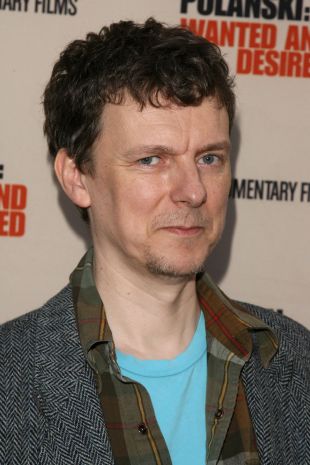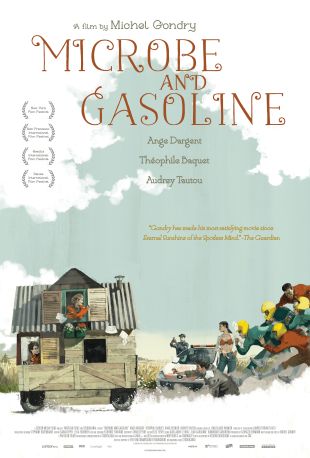Pioneering director Michel Gondry's remarkable creative energy and ability to innovate have resulted in some of the most visually stunning music videos in the history of the medium, and his wild imagination and organic, childlike imagery raised the bar of what one could achieve in the short format. In particular, his technique of placing numerous cameras around a subject and combining the images to form a visually astonishing sweeping effect has become so popular that it has since gone on to achieve timeless notoriety in such films as the The Matrix. With a family background that consists of a number of inventors and technological innovators, Gondry, not surprisingly, is seen as a bottomless wealth of imaginative innovation.
Michel Gondry is a native of Versailles who was raised in a freethinking family that encouraged and supported his creative endeavors; his parents harbored a deep love of pop music and the works of Duke Ellington, in particular. Gondry's grandfather Constant Martin is often credited with creating one of the earliest synthesizers (the Clavioline), and although his father would often bemoan his own lack of musical inspiration, he kept the spirit alive by owning a shop that sold musical instruments. Though the shop would eventually go out of business due to the elder Gondry's generosity toward burgeoning musicians (Michel claims that his father would practically give his instruments away), that generosity did extend to his immediate family, and young Michel and his brother were given a drum kit and a bass guitar, respectively, before the shop closed its doors. Subsequently forming a punk rock band with his brother, Gondry would also collaborate with his siblings on a series of short films in which the youngsters were constantly striving to break new technological ground.
Though Gondry's earliest career ambitions were to follow in his grandfather's footsteps as an inventor, his skills as a draughtsman led him to art college in Paris, where he would form the band Oui Oui with some close friends. It was the remarkably visionary videos that Gondry created for the band that propelled his early sparks of inspiration into a virtual inferno of creativity. Mixing animation with live action to create a series of wildly surreal and strangely beautiful worlds, the videos would serve as a calling card to the world of film. It was his videos for Oui Oui (in particular the video for the song "La Ville") that peaked the interest of eccentric singer Björk, and the two artists were soon collaborating on the video for her song "Human Behavior" from her post-Sugarcubes solo debut album. A visually extravagant study in the quirks of humans as expressed through various species of the animal kingdom, the groundbreaking video first aired in 1993, stunning viewers across the globe. Its organically outlandish images perfectly complimented the singer's unique musical style and served as the beginning of an enduring collaboration between the two artists.
Though Gondry would frequently return to work with Björk in the following years, the success of the "Human Behavior" video found such popular artists as the Rolling Stones, Massive Attack, Kylie Minogue, and Beck clamoring to collaborate with the visionary director. Always looking to create and invent new ways of shooting music videos, Gondry offered something fresh and original in each of his new efforts, effectively breathing fresh air into the somewhat stagnant (at the time) format. His video for the French band IAM's track "Je Danse le Mia" pioneered the morphing technique that would become increasingly prevalent in film and video throughout the 1990s. During this time, Gondry would also helm commercials for such notable clients as Levi's, Nike, and BMW. Subsequent videos for such bands as the White Stripes and the Foo Fighters found him consistently working with some of the hippest bands around.
Of course, it was only a matter of time before Gondry moved into feature-film territory, and with the 2002 comedy Human Nature, he did just that. Though the Charlie Kaufman-scripted film did indeed translate his quirky and unique visual world onto the large screen with its original tale of a hirsute nature girl who forms a tentative bond with a wild child who is being schooled in social skills by a repressed scientist, Human Nature ultimately proved a bit too odd for mass consumption and barely scored a blip on the box-office radar. Those who were familiar with Gondry's work, however, warmly and openly embraced the film for the most part, and it wasn't long before the director was eying scripts for his sophomore feature. In 2004, he once again teamed with Charlie Kaufman, this time for the tale of a troubled couple who have their memories of each other erased after a traumatic breakup in Eternal Sunshine of the Spotless Mind. The film found Gondry collaborating with an all-star cast that included the likes of Jim Carrey, Kate Winslet, Kirsten Dunst, and Elijah Wood. A wildly creative and hauntingly humorous endeavor which proved a sizable indie hit among filmgoers looking to experience a new twist on the modern romantic fable, Eternal Sunshine of the Spotless Mind more than made up for any previous disappointment of Human Nature. When it came time to hand out the coveted Oscars at the 2005 Academy Awards, Gondry found himself sharing a Best Original Screenplay award with co-screenwriters Kaufman and Pierre Bismuth.
After joining forces with famed comic Dave Chappelle the following year for the high-energy hybrid music/concert documentary Dave Chappelle's Block Party, Gondry soon returned to the realms of the fantastic with The Science of Sleep -- a surreal journey into the vivid imagination of a lonely dreamer that seemed something of a celluliod sibling to Eternal Sunshine. Of course, any fan of Gondry knows that he has never been a director inclined to rest on his laurels, and just two weeks before The Science of Sleep hit stateside theaters, Gondry was already busy shooting his next feature, Be Kind Rewind -- an unhinged comedy concerning a junkyard worker (Jack Black) whose magnitized brain erases every movie in his best friend's video store. Subsequently threatened with the loss of the store's sole customer -- an elderly woman showing signs of dementia -- as a result of the mishap, the well-intending junkman and his determined pal make a desperate bid to please the loyal patron by reinacting scenes from a variety of high-profile Hollywood hits.



